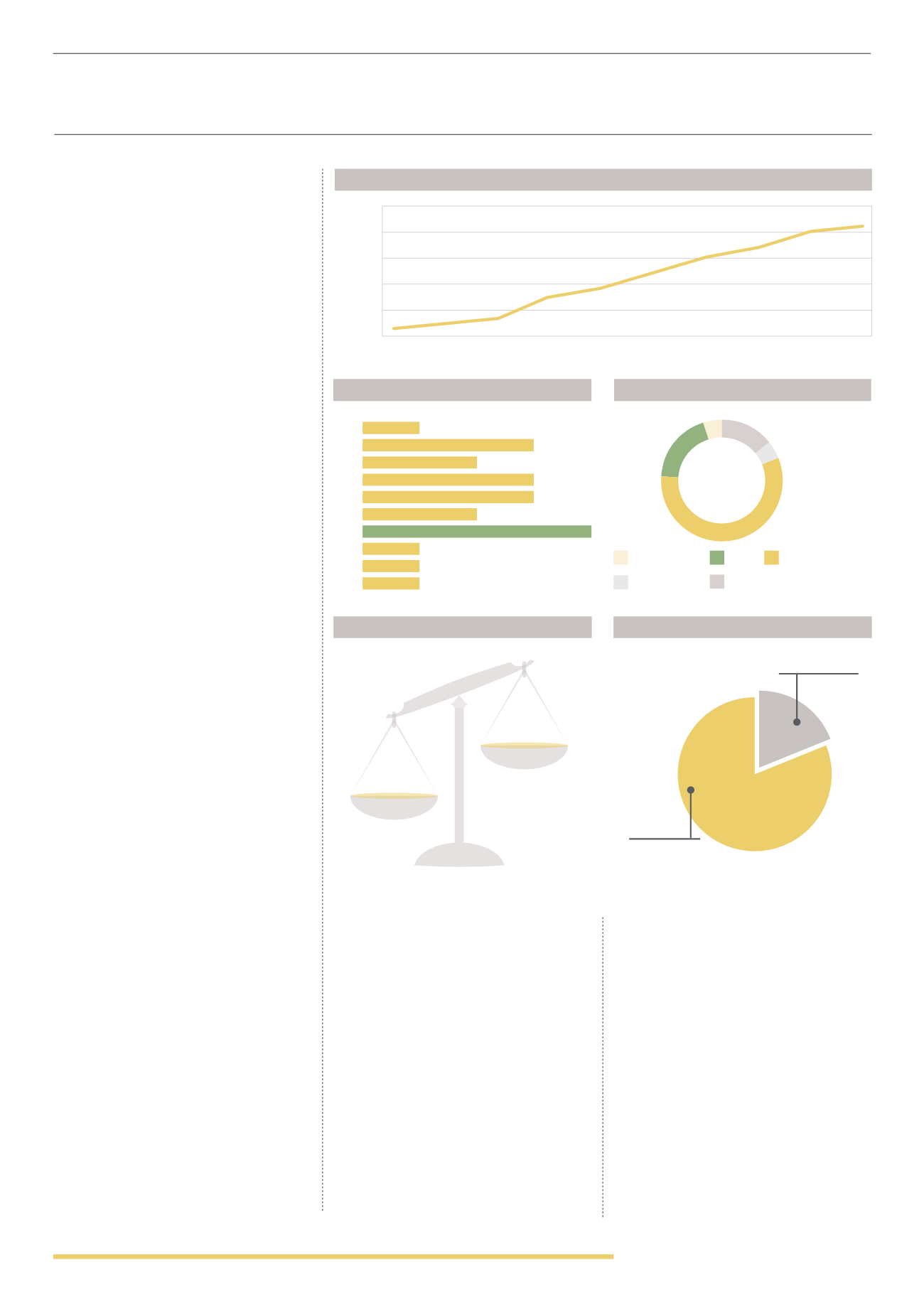
33
Number of Investments
0
10
5
20
15
25
2009
2010
2001
2005
2006
2007
2008
2011
2012
2013
SECTOR GROWTH
(2001 - 2013)
LAUNCH YEARS
(2009 - 2013)
COLLECTIVE INVESTMENT
SCHEME
There are 21 collective investment
schemes included on the register, from
17 different investment providers with 16
different forestry management companies.
Investment structures are dominated
by limited companies (67%) and limited
partnerships (24%).
#1 LAUNCH YEARS
New products have been launched
consistently over the last 9 years, particularly
since the financial crisis. The highest
number of new product launches was
actually in 2007, before the financial crisis,
which doesn’t seem to have had a major
impact on the sector. There has obviously
been demand in the market for collective
investment schemes over the last few years.
#2 TREE SPECIES
Collective investment schemes will usually
hold a wide range of underlying assets
and therefore are likely to invest in more
than one species of tree. This can provide
diversification as well as the opportunity
for returns to be realised at different
intervals. General forestry accounts for
almost 60% of underlying assets, followed
by teak (19%) and agarwood (14%).
#3 LOCATION
Investment locations can be hard to identify
as underlying assets may be located in a
wide range of different countries. Funds
are regularly structured and domiciled in
offshore finance centres such as Bermuda,
Guernsey, Luxembourg and the Isle of
Man. Underlying forestry plantations are
spread around the world and include North
America, South America, Europe and Asia.
#4 RETURNS
Returns can vary widely and be hard to
accurately predict. Forestry funds have
the advantage of diversifying underlying
assets across a number of different
forestry related sectors, in order to
spread risk and increase the potential for
long-term returns.
Every investment offers a variable or
predicted return which is dependent on the
performance of underlying assets. Returns
are paid annually in arrears and can vary
from 3% to as high as 18% per year. The
average predicted returns across the
sector are approximately 10% per year.
#5 MINIMUM INVESTMENT
Investors can gain access to forestry ETF’s
from less than £100, but this won’t give
pure exposure to timber growth. Collective
investments start from £500 but can vary
greatly with the average investment at
nearly £30,000. This is due to a number of
schemes only being considered suitable for
high net worth or sophisticated investors.
#6 EXIT
The majority (81%) of investment have
no clear exit strategy and will rely on a
secondary market sale. The exit can be
unclear and it could be hard to sell the
investment at short notice without incurring
a significant loss, particularly if the fund is
trading below its net asset value.
The 19% of investments that have a defined
lifespan are closed-ended, non-listed
funds with terms ranging from 8 years to
12 years. Investors may not be able to exit
these investments earlier should they wish,
as these products may not have the same
levels of liquidity and flexibility as listed
forestry funds.
TREE SPECIES
(2014)
2013
2012
2011
2010
2009
2008
2005
2001
2007
2006
1
1
1
1
4
2
2
3
3
3
"The number of collective investment schemes available has increased by 75% over the last 5 years."
MINIMUM INVESTMENT
Highest Minimum
Investment Level
£ 100,000
Average
£
29,632
Lowest Minimum
Investment Level
£ 500
(2014)
EXIT
(2014)
Defined
19%
Variable
0%
Teak
Agarwood
General Forestry
Sitka Spruce
Bamboo
14% 5%
19%
57%
5%


